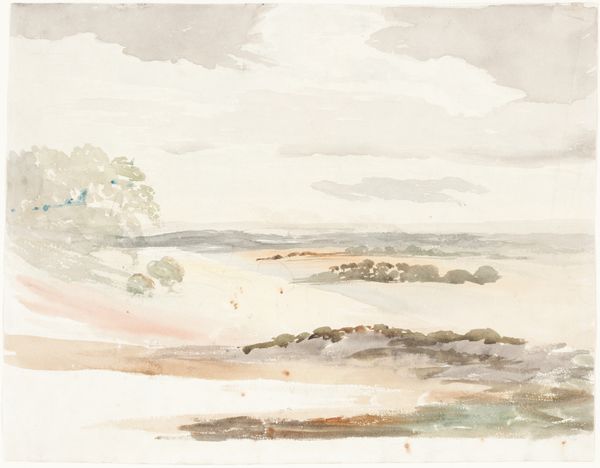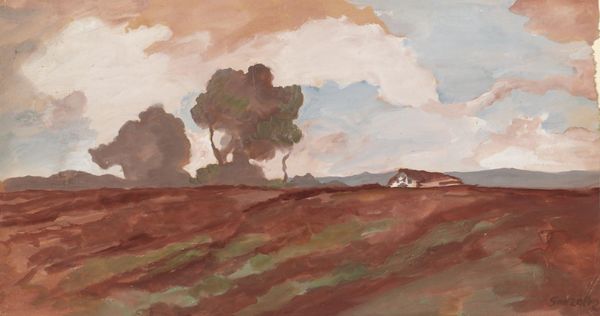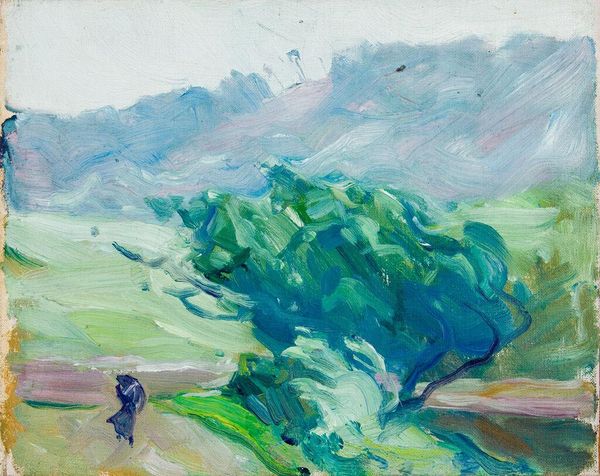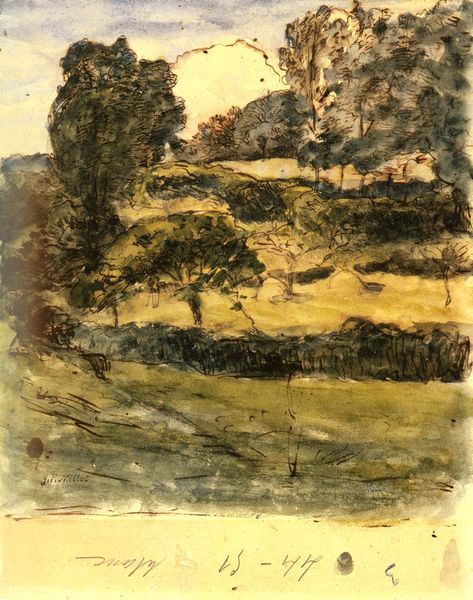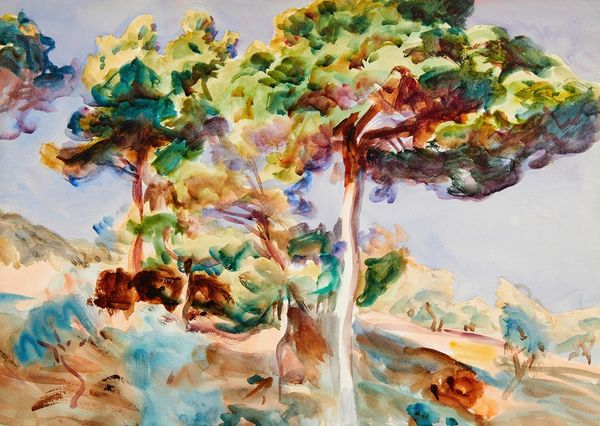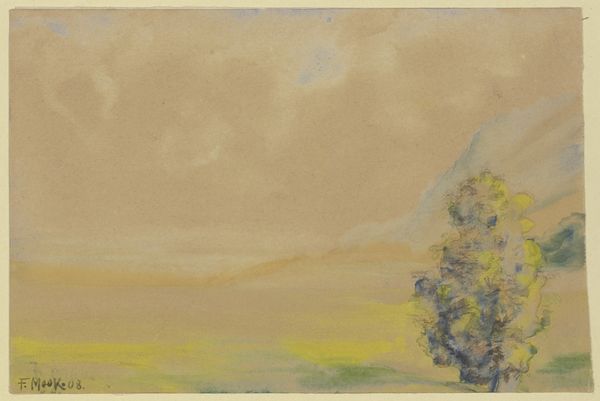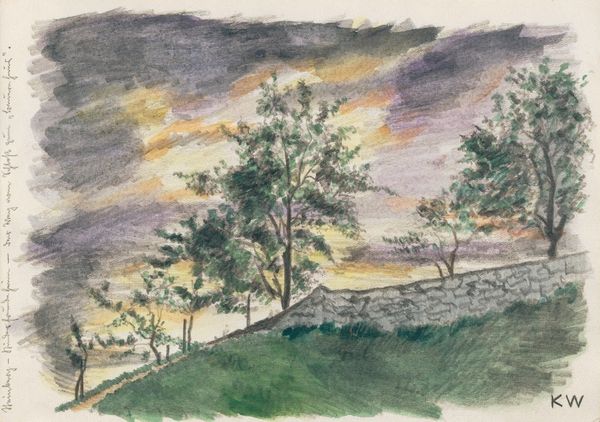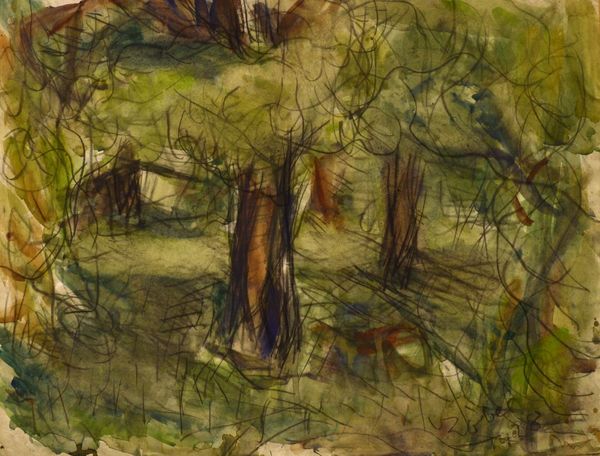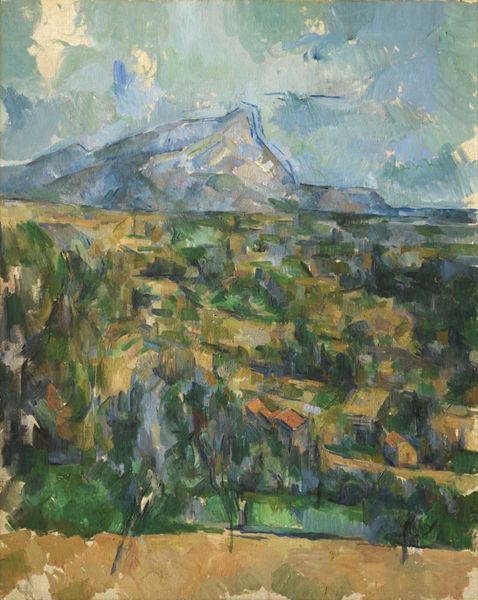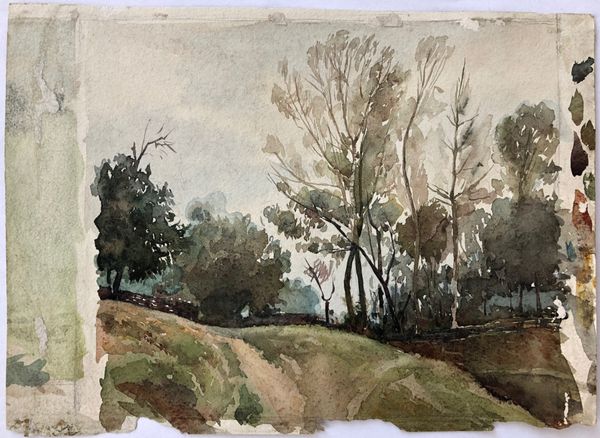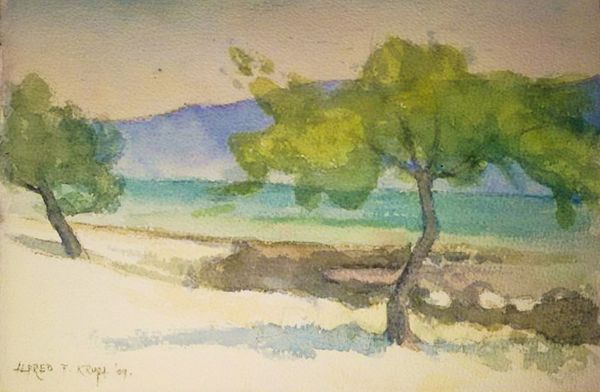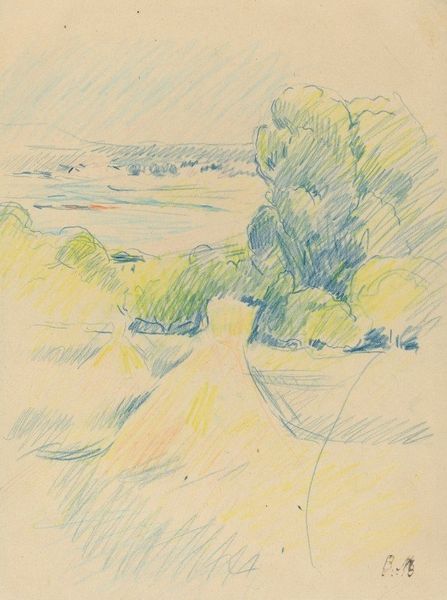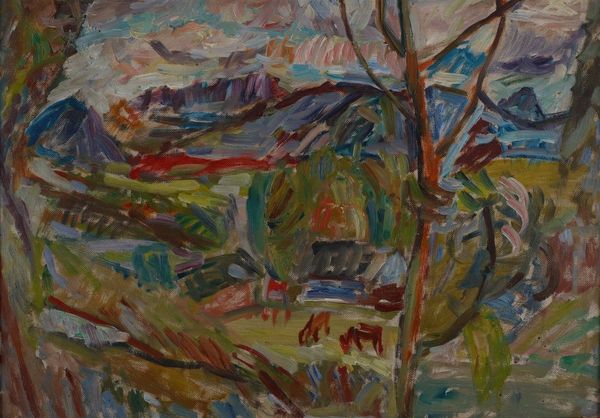
painting, watercolor
#
painting
#
impressionism
#
landscape
#
watercolor
#
realism
Copyright: Public Domain: Artvee
Editor: Here we have Jozef Israëls’ watercolor piece, "Bosrijk heuvellandschap," which roughly translates to "Wooded Hilly Landscape," created sometime between 1834 and 1911. It's rather muted, with these soft, almost hazy washes. What do you see in this piece, particularly beyond the immediate landscape? Curator: The initial read of this work, through a materialist lens, invites questioning of its production. Watercolors were often associated with amateur or "feminine" artmaking during this period. How does Israëls, a well-established artist known for his realist oil paintings of peasant life, engage with this medium, and what does it say about the intended audience or purpose of this work? Is this a study? A personal expression? Editor: That's fascinating! I hadn’t considered the medium's social context. So, the choice of watercolor, even by a respected artist, potentially challenges the art world hierarchy? Curator: Precisely. Consider the paper itself, the source of the pigments: where did they come from, who processed them? What was the social status of the people doing the gathering and the grinding? A "simple" landscape reveals a complex network of labor and materiality. Do you notice how quickly and freely he has captured the impression of this wooded area, hinting at a fleeting moment rather than a static view? Editor: Yes, it almost feels unfinished, more like a sketch than a finished painting. But how does this impact its value, or its meaning? Curator: It changes our perception, doesn't it? Was it made to be sold, or was it for private contemplation? Thinking about the 'means of production', can help deconstruct and appreciate art more completely by giving it a history and a place. Editor: Absolutely, thinking about materials and process gives this landscape a completely different dimension. It shifts the focus from just aesthetic appreciation to a deeper understanding of the work's historical and cultural position.
Comments
No comments
Be the first to comment and join the conversation on the ultimate creative platform.
